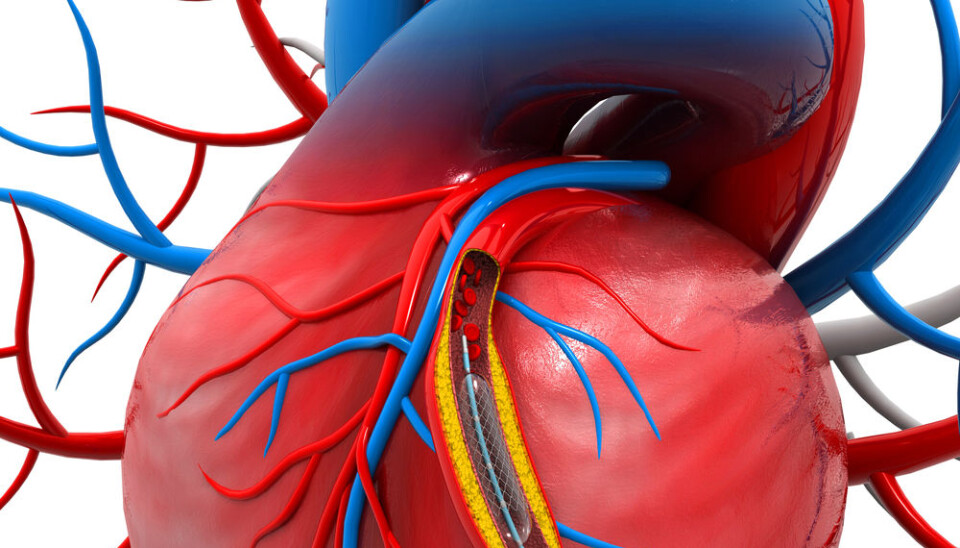
New study could change the treatment of blood clots
Doctors find new method to treat patients with blood clots in the heart that reduces risk of death by 44 per cent.
In a study just published doctors have demonstrated how to improve the treatment of patients suffering from blood clots in the heart (coronary thrombosis) so that the risk of death, having a new thrombosis or needing renewed angioplasty can be reduced by 44 per cent.
The study called DANAMI3-PRIMULTI has the potential to change future treatments the world over, says lead author Thomas Engstrøm, MD, from the Cardiology Department of Copenhagen University Hospital, Rigshospitalet
"We believe that our study, and the two that preceded it, involve enough knowledge to change European and American guidelines and with them future treatment," says Engstrøm.
Could change international guidelines
The new treatment involved patients who have undergone angioplasty being re-treated again two days after their acute coronary thrombosis if they have multiple constrictions of the blood vessels that require treatment.
During the extra treatment, the patients undergo angioplasty of the newly discovered constriction or constrictions of blood vessels not related to the coronary thrombosis but which at a later date could create new blood clots.
It has previously been uncertain whether or not this treatment method constituted unnecessary over-treatment, but the new study provides evidence that renewed treatment is best. And this is ground-breaking news.
"This is a well-conducted study and an important step in the right direction for the treatment of this group of patients," says Professor Morton J. Kern, of the University of California.
According to Engstrøm, the mortality rate is high among people with disease in multiple blood vessels.
The new knowledge is therefore important when it comes to the prevention of new episodes and improving survival and life quality among coronary thrombosis patients.
Treating multiple constrictions lowers risk of dying
In the new study, presented recently at the Annual Scientific Session of the American College of Cardiology, patients were randomly divided into two groups. One group had all their constrictions treated, while those in the other group only received treatment for the constriction in which the thrombosis was located.
The study showed that the subsequent risk of dying, having a new coronary thrombosis, or requiring angioplasty fell by 44 per cent if the patient had all his or her constrictions treated.
So far fewer patients risk dying from coronary or requiring subsequent angioplasty if the constrictions their blood vessels were treated in connection with their first coronary.
"The study was elegantly conducted and gives us an entirely new perspective on the treatment of coronary thrombosis," says Gunnar Gislason, a professor of heart diseases and head of research at Danish Heart Association.
One in four Danes dies from cardiovascular disease
More than one in four Danes die every year of cardiovascular disease which is the second most common cause of death in Denmark.
A coronary thrombosis is treated by angioplasty which involves inserting a tiny balloon into the artery and inflating it at the site of the clot or constriction.
Then a wire mesh tube is inserted which remains in place after the operation. The new treatment involves the insertion of tubes in all constricted vessels and not just in the thrombosis itself.
"The discussion been going on for a long time as to whether constrictions should be treated or not. A method was used in the study which facilitates highly detailed measurement of blood vessels to determine whether a constriction is significant or not," explains Gislason.
The study provides evidence that it is worth while treating significant constrictions in blood vessels in patients who have suffered a coronary thrombosis.
-----------------
Read the original story in Danish on Videnskab.dk
Translated by: Hugh Matthews









